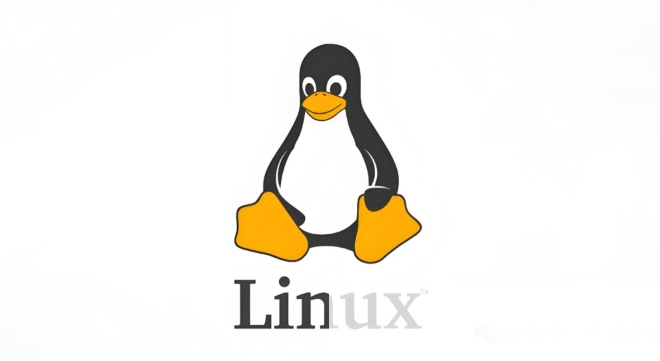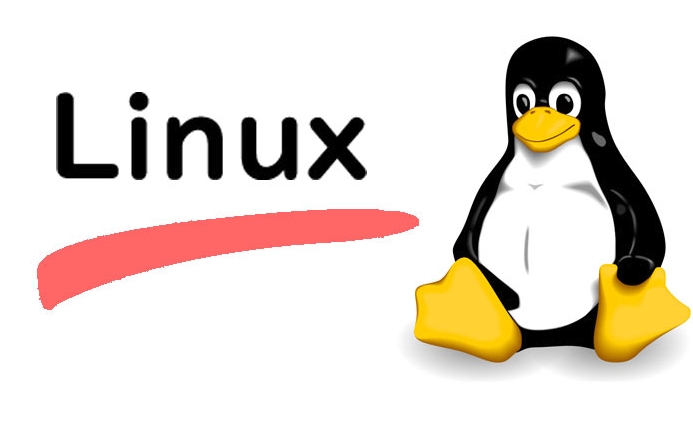A Beginner's Guide to Compiling the Linux Kernel
Jul 23, 2025 am 12:54 AMCompiling your own kernel allows customization, performance improvements, testing, and learning. 2. Prepare your system by installing build tools and libraries specific to your distribution. 3. Download the kernel source from kernel.org or via wget. 4. Configure the kernel using your current config with make oldconfig or customize it interactively with make menuconfig. 5. Compile the kernel using make -j$(nproc) to speed up the process. 6. Install modules with sudo make modules_install and install the kernel with sudo make install, manually updating initramfs and GRUB if needed. 7. Reboot and select the new kernel from GRUB, then verify with uname -r and check for errors in dmesg. 8. Keep the old kernel as a backup and troubleshoot issues like boot failure or missing drivers by revisiting configuration settings, ensuring firmware and filesystem support are enabled as needed.

Compiling the Linux kernel from source might sound intimidating at first, but it’s a valuable skill for understanding how your system works and customizing your operating environment. Whether you want to enable specific drivers, test new features, or just learn how kernels are built, this guide walks you through the process step by step—no prior experience required.

Why Compile Your Own Kernel?
Before diving in, it helps to know why you’d want to compile the kernel yourself:
- Customization: Enable or disable features and drivers not included in your distribution’s default kernel.
- Performance: Strip out unused modules to reduce kernel size and boot time.
- Testing: Try out the latest kernel version or patches before they’re available in stable releases.
- Learning: Gain deeper insight into how Linux operates under the hood.
Keep in mind: most users don’t need to compile their own kernel. Distributions provide well-tested, secure, and optimized versions. But if you're curious or have a specific need, here's how to do it safely.

Step 1: Prepare Your System
You’ll need some tools and libraries to build the kernel. These vary slightly by distribution.
On Ubuntu/Debian:

sudo apt update sudo apt install build-essential libncurses-dev bison flex libssl-dev libelf-dev
On Fedora/RHEL:
sudo dnf groupinstall "Development Tools" sudo dnf install ncurses-devel openssl-devel bison flex elfutils-libelf-devel
On Arch Linux:
sudo pacman -S base-devel ncurses openssl bison flex
These packages include compilers (like GCC), header files, and tools needed for configuration and building.
Also, make sure you have plenty of disk space—kernel compilation can use 10–20 GB temporarily.
2. Get the Kernel Source Code
The official Linux kernel source is hosted at http://ipnx.cn/link/6d4bcfa605eacb74a48e2a0a871be965. You can download the latest stable release there.
Alternatively, use wget:
cd /tmp wget https://cdn.kernel.org/pub/linux/kernel/v6.x/linux-6.6.1.tar.xz tar -xf linux-6.6.1.tar.xz cd linux-6.6.1
? Tip: Replace
6.6.1with the latest version number listed on kernel.org.
You can also clone the Git repository, but that’s more useful for developers tracking changes:
git clone https://git.kernel.org/pub/scm/linux/kernel/git/stable/linux.git
3. Configure the Kernel
This is where you decide what features and drivers go into your kernel. There are several ways to configure it:
Option A: Use Your Current Configuration (Recommended)
Start with your current running kernel’s config—it already works with your hardware.
cp /boot/config-$(uname -r) .config
Then update it for any new options in the newer kernel:
make oldconfig
This will prompt you to answer questions about new features. Press Enter to accept defaults unless you have a reason to change them.
Option B: Interactive Menu Configuration
Use a visual interface to tweak settings:
make menuconfig
Navigate using arrow keys:
- Toggle features on/off with Space.
- Exit and save with
<Exit>and<Yes>.
Common things people customize:
- Processor type and features
- Filesystem support (e.g., Btrfs, exFAT)
- Device drivers (e.g., GPU, Wi-Fi chipsets)
If you're unsure, stick with defaults.
4. Compile the Kernel
Now comes the actual build. This may take 10 minutes to over an hour depending on your CPU and cores.
Run:
make -j$(nproc)
makebuilds the kernel image and modules.-j$(nproc)uses all available CPU cores to speed things up.
Once done, you’ll have:
vmlinuz: The compressed kernel image (inarch/x86/boot/bzImage)- Modules: Device drivers and extensions (built in subdirectories)
5. Install Modules and Kernel
Install the compiled modules:
sudo make modules_install
This copies modules to /lib/modules/<kernel-version>/.
Install the kernel itself:
sudo make install
This does three things:
- Copies
vmlinuzto/boot. - Creates an initial ramdisk (
initramfs) using your distro’s tools. - Updates the bootloader (GRUB) configuration so you can select the new kernel at boot.
? Note: On some distributions like Arch, you may need to manually generate the initramfs:
sudo mkinitcpio -k <version> -g /boot/initramfs-linux-custom.img
And update GRUB:
sudo grub-mkconfig -o /boot/grub/grub.cfg
6. Reboot and Test
Reboot your system and choose the newly compiled kernel from the GRUB menu.
After logging in, verify:
uname -r
It should show the version you just built.
Check for errors in dmesg:
dmesg | grep -i error
If everything looks good—you’re running your own kernel!
Troubleshooting Tips
- Boot fails? Reboot and pick the old kernel from GRUB. Then investigate: missing drivers, wrong config, or missing firmware.
-
Wi-Fi not working? You might have disabled firmware or driver support in
menuconfig. Rebuild with those enabled. -
Forgot to enable a filesystem? Recompile with the right options under
File systemsinmake menuconfig.
Always keep your old kernel as backup until you’re confident the new one is stable.
Final Thoughts
Compiling the Linux kernel isn’t something most users need to do daily—but doing it once gives you real insight into how Linux works. Once you’ve gone through the steps, you’ll see it’s not magic, just careful configuration and compilation.
Stick to stable releases, back up your system, and don’t rush. Over time, you can experiment with patches, custom tweaks, or even contribute to the kernel itself.
Basically, it’s not hard—just easy to overlook a detail. Pay attention, follow the steps, and you’ll have a working custom kernel in no time.
The above is the detailed content of A Beginner's Guide to Compiling the Linux Kernel. For more information, please follow other related articles on the PHP Chinese website!

Hot AI Tools

Undress AI Tool
Undress images for free

Undresser.AI Undress
AI-powered app for creating realistic nude photos

AI Clothes Remover
Online AI tool for removing clothes from photos.

Clothoff.io
AI clothes remover

Video Face Swap
Swap faces in any video effortlessly with our completely free AI face swap tool!

Hot Article

Hot Tools

Notepad++7.3.1
Easy-to-use and free code editor

SublimeText3 Chinese version
Chinese version, very easy to use

Zend Studio 13.0.1
Powerful PHP integrated development environment

Dreamweaver CS6
Visual web development tools

SublimeText3 Mac version
God-level code editing software (SublimeText3)
 C++ compilation error: undeclared identifier, how to solve it?
Aug 22, 2023 pm 03:34 PM
C++ compilation error: undeclared identifier, how to solve it?
Aug 22, 2023 pm 03:34 PM
When programming in C++, we often encounter the problem of undeclared identifiers. This usually occurs when undefined variables, functions, or classes are used, causing the compiler to fail to recognize these identifiers, resulting in compilation errors. This article describes common causes of undeclared identifier problems and how to resolve them. Common Causes Undeclared identifier problems usually arise from the following reasons: Variables, functions, or classes are not declared correctly: You should declare variables, functions, or classes before using them. If the variable is not declared or function
 Why does Linux need to compile source code?
Mar 17, 2023 am 10:21 AM
Why does Linux need to compile source code?
Mar 17, 2023 am 10:21 AM
Reasons: 1. There are many versions of Linux, but each version uses different software or kernel versions, and the environment that the binary package depends on may not be able to run normally, so most software directly provides source code for compilation and installation. 2. Easy to customize to meet different needs. 3. Convenient for operation and maintenance and developer maintenance; source code can be packaged as binary, but packaging this software will require costly extra work, including maintenance, so if it is source code, the software manufacturer will maintain it directly.
 Exploring the functions of the Linux kernel: a detailed introduction to the five major parts
Mar 21, 2024 am 09:57 AM
Exploring the functions of the Linux kernel: a detailed introduction to the five major parts
Mar 21, 2024 am 09:57 AM
As the core part of the operating system, the Linux kernel is responsible for important functions such as managing hardware resources and providing system calls. This article will delve into the five major parts of the Linux kernel, including process management, file system, network communication, device driver and memory management, and provide a detailed introduction and code examples. 1. Process Management Process Creation In the Linux kernel, process creation is implemented through the fork() system call. Here is a simple example code: #include
 Why does my Go program take longer to compile?
Jun 09, 2023 pm 06:00 PM
Why does my Go program take longer to compile?
Jun 09, 2023 pm 06:00 PM
In recent years, Go language has become the choice of more and more developers. However, compared to other programming languages, the compilation speed of Go language is not fast enough. Many developers will encounter this problem when compiling Go programs: Why does my Go program take longer to compile? This article will explore this issue from several aspects. The compiler architecture of Go language The compiler architecture of Go language adopts a three-stage design, which are front-end, middle layer and back-end. The front-end is responsible for translating the source code into intermediate code in Go language, and the middle layer will
 C++ compilation error: The function parameter list is too long, how to solve it?
Aug 21, 2023 pm 11:19 PM
C++ compilation error: The function parameter list is too long, how to solve it?
Aug 21, 2023 pm 11:19 PM
C++ compilation error: The function parameter list is too long, how to solve it? When writing programs in C++, you sometimes encounter such a compilation error: the function parameter list is too long. For C++ beginners, this may be a headache. Next, we’ll cover the causes and solutions to this problem. First, let's take a look at the basic rules of C++ function parameters. In C++, function parameters must be declared between the function name and the opening parenthesis. When you pass a function parameter, you tell the function what to do. These parameters can be any
 Compilation and decompilation techniques in Java
Jun 09, 2023 am 09:43 AM
Compilation and decompilation techniques in Java
Jun 09, 2023 am 09:43 AM
Java is a very popular programming language that is widely used to develop various types of software. In Java development, compilation and decompilation technology are very important links. Compilation technology is used to convert Java code into executable files, while decompilation technology allows one to convert executable files back into Java code. This article will introduce compilation and decompilation techniques in Java. 1. Compilation technology Compilation is the process of converting high-level language (such as Java) code into machine language. in Java
 An in-depth exploration of the Linux kernel source code distribution
Mar 15, 2024 am 10:21 AM
An in-depth exploration of the Linux kernel source code distribution
Mar 15, 2024 am 10:21 AM
This is a 1500-word article that explores the Linux kernel source code distribution in depth. Due to limited space, we will focus on the organizational structure of the Linux kernel source code and provide some specific code examples to help readers better understand. The Linux kernel is an open source operating system kernel whose source code is hosted on GitHub. The entire Linux kernel source code distribution is very large, containing hundreds of thousands of lines of code, involving multiple different subsystems and modules. To gain a deeper understanding of the Linux kernel source code
 Can go language be compiled?
Dec 09, 2022 pm 06:20 PM
Can go language be compiled?
Dec 09, 2022 pm 06:20 PM
The go language can be compiled. Go language is a compiled static language, a programming language that requires compilation to run. There are two commands for compiling Go language programs: 1. "go build" command, which can compile Go language program code into a binary executable file, but the binary file needs to be run manually; 2. "go run" command, The Go language program will be run directly after compilation. A temporary file will be generated during the compilation process, but an executable file will not be generated.






